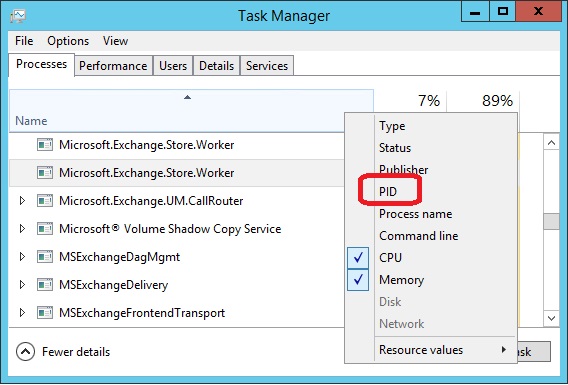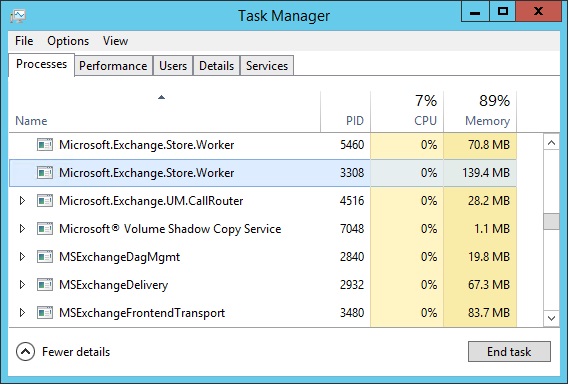As we all know by now, the Exchange Store service in Exchange 2013 has been rewritten in such a way that each database now runs under its own process, thus preventing store issues to affect all databases in the server. Managed Store is the new name for the rewritten Information Store process (store.exe). It is now written in C#, designed to enable a more granular management of resources (additional I/O reduction, for example) and is even more integrated with the Exchange Replication service (MSExchangeRepl.exe), in order to provide a higher level of availability.
The database engine continues to be ESE, but the mailbox database schema itself has changed in order to provide many optimizations.
The database engine continues to be ESE, but the mailbox database schema itself has changed in order to provide many optimizations.
The Managed Store is composed of two processes. The first one is the Store Worker Process (Microsoft.Exchange.Store.Worker.exe) that is similar to the old store.exe process. The difference is, as already mentioned, that there is one Store Worker Process for each database. This means that if one of these processes fails, only the database it is responsible for will be affected, while all the other databases will remain operational.
The second one is the Store Service Process (Microsoft.Exchange.Store.Service.exe) that controls all store worker processes. For example, when a database is mounted, the store service process will start a new store worker process for that particular database. On the other hand, when a database is dismounted, it will terminate the store worker process responsible for that database.
The question that sometimes arises is “how do we determine which store worker process is responsible for which mailbox database?” To show how to do this, I am going to use a test server where I have 2 mailbox databases, and therefore two Microsoft.Exchange.Store.Worker.exe):
We can now see that that PID for the store worker we are trying to identify is 3308:
Now open an Exchange Management Shell console and run the following cmdlet:
Get-MailboxDatabase -Status | Sort Name | FT Name, WorkerProcessID
We now know that the store worker process with the PID of 3308 is responsible for the mailbox database DB01.








